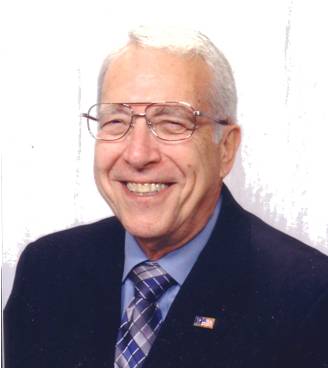Ted W White
age ~61
from West Chester, PA
- Also known as:
-
- Ted Warren White
- Ted J White
- Ted N White
- Warren Ted White
- Teo W White
- White Ted Warren
- Phone and address:
-
1017 Longview Dr, West Chester, PA 19380
6104308444
Ted White Phones & Addresses
- 1017 Longview Dr, West Chester, PA 19380 • 6104308444
- Naples, FL
- Downingtown, PA
- Georgetown, TX
- Bryn Mawr, PA
- San Diego, CA
- West Islip, NY
- Villanova, PA
- Chester, PA
Work
-
Company:Remax millennium
-
Address:891 Kuhn Drive, Chula Vista, CA 91914
-
Phones:7144000111
-
Position:Founder
-
Industries:Real Estate Agents and Managers
Education
-
Degree:Doctor of Jurisprudence/Juris Doctor (J.D.)
-
School / High School:Baylor University School of Law
Ranks
-
Licence:Texas - Eligible To Practice In Texas
-
Date:1982
Specialities
Buyer's Agent • Listing Agent
Name / Title
Company / Classification
Phones & Addresses
Founder
Remax Millennium
Real Estate Agents and Managers
Real Estate Agents and Managers
891 Kuhn Drive, Chula Vista, CA 91914
Account Manager
Hardware Products Co
Wire Springs
Wire Springs
191 Williams St, Selden, NY 11784
Administrator
Center Square Motors
Regulation, Licensing, and Inspection of Misc...
Regulation, Licensing, and Inspection of Misc...
811 Dekalb Pikes, Blue Bell, PA 19422
Director
Band Concessions Operating Board of Round Rock Area Schools
PO Box 85, McNeil, TX 78651
Director
HIGH GABRIEL WATER SUPPLY CORPORATION
PO Box 525, Leander, TX 78646
Chief Operating Officer
Aqua Pharmaceuticals, LLC
Ret Drugs/Sundries
Ret Drugs/Sundries
5 Great Vly Pkwy, Frazer, PA 19355
158 W Gay St, West Chester, PA 19380
6106447000, 4846310121
158 W Gay St, West Chester, PA 19380
6106447000, 4846310121
Incorporator
CHALLENGER X INNS OF MISSISSIPPI, INC
President
Boxworks Inc
Mfg Corrugated/Solid Fiber Boxes Mfg Wood Boxes/Shook Mfg Wood Containers
Mfg Corrugated/Solid Fiber Boxes Mfg Wood Boxes/Shook Mfg Wood Containers
1100 Market St, Gloucester, NJ 08031
PO Box 108, Gloucester, NJ 08030
7 St At Charles St, Gloucester City, NJ 08030
8564569030
PO Box 108, Gloucester, NJ 08030
7 St At Charles St, Gloucester City, NJ 08030
8564569030
Us Patents
-
Method For Forming A Double-Gated Semiconductor Device
view source -
US Patent:6838322, Jan 4, 2005
-
Filed:May 1, 2003
-
Appl. No.:10/427577
-
Inventors:Daniel T. Pham - Austin TX, US
Alexander L. Barr - Austin TX, US
Leo Mathew - Austin TX, US
Anne M. Vandooren - Austin TX, US
Ted R. White - Austin TX, US -
Assignee:Freescale Semiconductor, Inc. - Austin TX
-
International Classification:H01L 2100
H01L 2120
H01L 213205 -
US Classification:438151, 438152, 438157, 438166, 438482, 438486, 438585, 438587, 438588
-
Abstract:A method for forming a polysilicon FinFET () or other thin film transistor structure includes forming an insulative layer () over a semiconductor substrate (). An amorphous silicon layer () forms over the insulative layer (). A silicon germanium seed layer () forms in association with the amorphous silicon layer () for controlling silicon grain growth. The polysilicon layer arises from annealing the amorphous silicon layer (). During the annealing step, silicon germanium seed layer (), together with silicon germanium layer (), catalyzes silicon recrystallization to promote growing larger crystalline grains, as well as fewer grain boundaries within the resulting polysilicon layer. Source (), drain (), and channel () regions are formed within the polysilicon layer. A double-gated region () forms in association with source (), drain (), and channel () to produce polysilicon FinFET ().
-
Method For Forming A Semiconductor Device Having A Strained Channel And A Heterojunction Source/Drain
view source -
US Patent:7018901, Mar 28, 2006
-
Filed:Sep 29, 2004
-
Appl. No.:10/954121
-
Inventors:Mariam G. Sadaka - Austin TX, US
Ted R. White - Austin TX, US
Alexander L. Barr - Crolles, FR
Venkat R. Kolagunta - Austin TX, US
Victor H. Vartanian - Dripping Springs TX, US
Da Zhang - Austin TX, US -
Assignee:Freescale Semiconductor, Inc. - Austin TX
-
International Classification:H01L 21/336
-
US Classification:438285, 438300, 438290
-
Abstract:A semiconductor device () is formed by positioning a gate () overlying a semiconductor layer () of preferably silicon. A semiconductor material () of, for example only, SiGe or Ge, is formed adjacent the gate over the semiconductor layer and over source/drain regions. A thermal process diffuses the stressor material into the semiconductor layer. Lateral diffusion occurs to cause the formation of a strained channel () in which a stressor material layer () is immediately adjacent the strained channel. Extension implants create source and drain implants from a first portion of the stressor material layer. A second portion of the stressor material layer remains in the channel between the strained channel and the source and drain implants. A heterojunction is therefore formed in the strained channel. In another form, oxidation of the stressor material occurs rather than extension implants to form the strained channel.
-
Double Gate Device Having A Heterojunction Source/Drain And Strained Channel
view source -
US Patent:7067868, Jun 27, 2006
-
Filed:Sep 29, 2004
-
Appl. No.:10/952676
-
Inventors:Mariam G. Sadaka - Austin TX, US
Ted R. White - Austin TX, US
Alexander L. Barr - Crolles, FR
Venkat R. Kolagunta - Austin TX, US
Victor H. Vartanian - Dripping Springs TX, US
Da Zhang - Austin TX, US -
Assignee:Freescale Semiconductor, Inc. - Austin TX
-
International Classification:H01L 27/108
-
US Classification:257296, 257327
-
Abstract:A semiconductor device () is formed by positioning a gate () overlying a semiconductor layer () of preferably silicon. A semiconductor material () of, for example only, SiGe or Ge, is formed adjacent the gate over the semiconductor layer and over source/drain regions. A thermal process diffuses the stressor material into the semiconductor layer. Lateral diffusion occurs to cause the formation of a strained channel () in which a stressor material layer () is immediately adjacent the strained channel. Extension implants create source and drain implants from a first portion of the stressor material layer. A second portion of the stressor material layer remains in the channel between the strained channel and the source and drain implants. A heterojunction is therefore formed in the strained channel. In another form, oxidation of the stressor material occurs rather than extension implants to form the strained channel.
-
Dual Metal Gate Electrode Semiconductor Fabrication Process And Structure Thereof
view source -
US Patent:7074664, Jul 11, 2006
-
Filed:Mar 29, 2005
-
Appl. No.:11/092418
-
Inventors:Ted R. White - Austin TX, US
Olubunmi O. Adetutu - Austin TX, US
Robert E. Jones - Austin TX, US -
Assignee:Freescale Semiconductor, Inc. - Austin TX
-
International Classification:H01L 21/8238
-
US Classification:438199, 438692
-
Abstract:A semiconductor fabrication process includes patterning a first gate electrode layer overlying a gate dielectric. A second gate electrode layer is formed overlying the first gate electrode layer and the gate dielectric. Portions of the second gate electrode layer overlying the first gate electrode layer are removed until the first and second gate electrode layers have the same thickness. A third gate electrode layer may be formed overlying the first and second gate electrode layers. The first gate electrode layer may comprise TiN and reside primarily overlying PMOS regions while the second gate electrode layer may comprise TaC or TaSiN and primarily overlie NMOS regions. Removing portions of the second gate electrode layer may include performing a chemical mechanical process (CMP) without masking the second gate electrode layer or forming a resist mask and etching exposed portions of the second gate electrode layer.
-
Channel Orientation To Enhance Transistor Performance
view source -
US Patent:7160769, Jan 9, 2007
-
Filed:Oct 20, 2004
-
Appl. No.:10/969108
-
Inventors:Ted R. White - Austin TX, US
Alexander L. Barr - Crolles, FR
Dejan Jovanovic - Austin TX, US
Mariam G. Sadaka - Austin TX, US -
Assignee:Freescale Semiconductor, Inc. - Austin TX
-
International Classification:H01L 21/336
H01L 29/78 -
US Classification:438198, 438199, 438275, 257369, 257E21409, 257E29255
-
Abstract:P channel transistors are formed in a semiconductor layer that has a (110) surface orientation for enhancing P channel transistor performance, and the N channel transistors are formed in a semiconductor layer that has a (100) surface orientation. To further provide P channel transistor performance enhancement, the direction of their channel lengths is selected based on their channel direction. The narrow width P channel transistors are preferably oriented in the direction. The wide channel width P channel transistors are preferably oriented in the direction.
-
Method For Making A Semiconductor Structure Using Silicon Germanium
view source -
US Patent:7163903, Jan 16, 2007
-
Filed:Apr 30, 2004
-
Appl. No.:10/836172
-
Inventors:Marius K. Orlowski - Austin TX, US
Alexander L. Barr - Crolles, FR
Mariam G. Sadaka - Austin TX, US
Ted R. White - Austin TX, US -
Assignee:Freescale Semiconductor, Inc. - Austin TX
-
International Classification:H01L 21/00
-
US Classification:438933, 438752, 438753, 257E21, 257411, 257582, 257648
-
Abstract:A semiconductor substrate having a silicon layer is provided. In one embodiment, the substrate is a silicon-on-insulator (SOI) substrate having an oxide layer underlying the silicon layer. An amorphous or polycrystalline silicon germanium layer is formed overlying the silicon layer. Alternatively, germanium is implanted into a top portion of the silicon layer to form an amorphous silicon germanium layer. The silicon germanium layer is then oxidized to convert the silicon germanium layer into a silicon dioxide layer and to convert at least a portion of the silicon layer into germanium-rich silicon. The silicon dioxide layer is then removed prior to forming transistors using the germanium-rich silicon. In one embodiment, the germanium-rich silicon is selectively formed using a patterned masking layer over the silicon layer and under the silicon germanium layer. Alternatively, isolation regions may be used to define local regions of the substrate in which the germanium-rich silicon is formed.
-
Semiconductor Structure Having Strained Semiconductor And Method Therefor
view source -
US Patent:7205210, Apr 17, 2007
-
Filed:Feb 17, 2004
-
Appl. No.:10/780143
-
Inventors:Alexander L. Barr - Crolles, FR
Dejan Jovanovic - Austin TX, US
Mariam G. Sadaka - Austin TX, US
Ted R. White - Austin TX, US -
Assignee:Freescale Semiconductor, Inc. - Austin TX
-
International Classification:H01L 21/30
H01L 21/46 -
US Classification:438455, 257E21122
-
Abstract:A first semiconductor structure has a silicon substrate, a first silicon germanium layer grown on the silicon, a second silicon germanium layer on the first silicon germanium layer, and a strained silicon layer on the second silicon germanium layer. A second semiconductor structure has a silicon substrate and an insulating top layer. The silicon layer of the first semiconductor structure is bonded to the insulator layer to form a third semiconductor structure. The second silicon germanium layer is cut to separate most of the first semiconductor structure from the third semiconductor structure. The silicon germanium layer is removed to expose the strained silicon layer where transistors are subsequently formed, which is then the only layer remaining from the first semiconductor structure. The transistors are oriented along the direction and at a 45 degree angle to the direction of the base silicon layer of the second silicon.
-
Template Layer Formation
view source -
US Patent:7208357, Apr 24, 2007
-
Filed:Aug 17, 2004
-
Appl. No.:10/919922
-
Inventors:Mariam G. Sadaka - Austin TX, US
Alexander L. Barr - Crolles, FR
Ted R. White - Austin TX, US -
Assignee:Freescale Semiconductor, Inc. - Austin TX
-
International Classification:H01L 21/00
H01L 21/20
H01L 21/425 -
US Classification:438166, 438517, 438479, 438933, 257E21285, 257E21564, 257E21703
-
Abstract:A process for forming a strained semiconductor layer. The process includes implanting ions into a semiconductor layer prior to performing a condensation process on the layer. The ions assist in diffusion of atoms (e. g. germanium) in the semiconductor layer and to increase the relaxation of the semiconductor layer. After the condensation process, the layer can be used as a template layer for forming a strained semiconductor layer.
Isbn (Books And Publications)








Lawyers & Attorneys

Ted Neal White, Austin TX - Lawyer
view sourceAddress:
Po Box 12017, Austin, TX 78711
5124606515 (Office)
5124606515 (Office)
Licenses:
Texas - Eligible To Practice In Texas 1982
Education:
Baylor University School of Law
Degree - Doctor of Jurisprudence/Juris Doctor (J.D.)
Graduated - 1982
Degree - Doctor of Jurisprudence/Juris Doctor (J.D.)
Graduated - 1982
Specialties:
Government - 100%
Googleplus

Ted White
Work:
Recycling Concepts of West MI, Inc. - Warehouse Manager (2009)
Education:
Grandville High School - General
Relationship:
In_a_relationship
About:
Name's Ted. I'm currently20 years old and work full time. I have an amazing girlfriend I love very much!

Ted White
Work:
Optionsclick.com - Trader (2010)
About:
I am Binary Options Ted. The shortlink to my G+ proflie is: gplus.to/binaryoptionsted I trade binary options by day, and in between asset trading sessions, I make art. Mostly hand drawn. Sometimes no...
Tagline:
I am a Binary Trader and live in Timor Leste
Bragging Rights:
Trade Binary Options Online, drive porche (old one) and have a chillin' boat

Ted White
Work:
WPBF-TV - Reporter (2007)
About:
I am a broadcast journalist who likes my job and loves my family.
Tagline:
I am a broadcast journalist who likes my job and loves my family.

Ted White

Ted White (Cometa Magico)

Ted White

Ted White

Ted White
Plaxo

Ted White
view sourceNew Hope Chruch Northwood NH

Ted White
view sourceBeltsville, Maryland

Ted White
view sourceBresnan Communications
Youtube
Classmates

Ted White
view sourceSchools:
Saint James School Falls Church VA 1972-1981
Community:
Ken Dahl, Christine Wells, Kathy Bonner

Ted White
view sourceSchools:
Caston High School Fulton IN 1967-1971

Ted White
view sourceSchools:
Solebury School New Hope PA 1960-1964
Community:
Ann Goar, John French, Kathleen Smith

Ted White
view sourceSchools:
West Lamar High School Petty TX 1962-1966
Community:
Viola Moore, Jeannetta Smith, William Gallaway, Skipper Gaston, Alma Loftin

Ted White
view sourceSchools:
Beardsley Junior High School Bakersfield CA 1997-1999
Community:
Luann Oney, Karen Hardin, Tammy Montz

Ted White
view source
Ted White III
view source
Ted Sk White
view source
Ted White Blanco
view source
Ted K White
view source
Ted White
view source
Ted White
view source
Ted White
view sourceFlickr
Myspace
Get Report for Ted W White from West Chester, PA, age ~61













